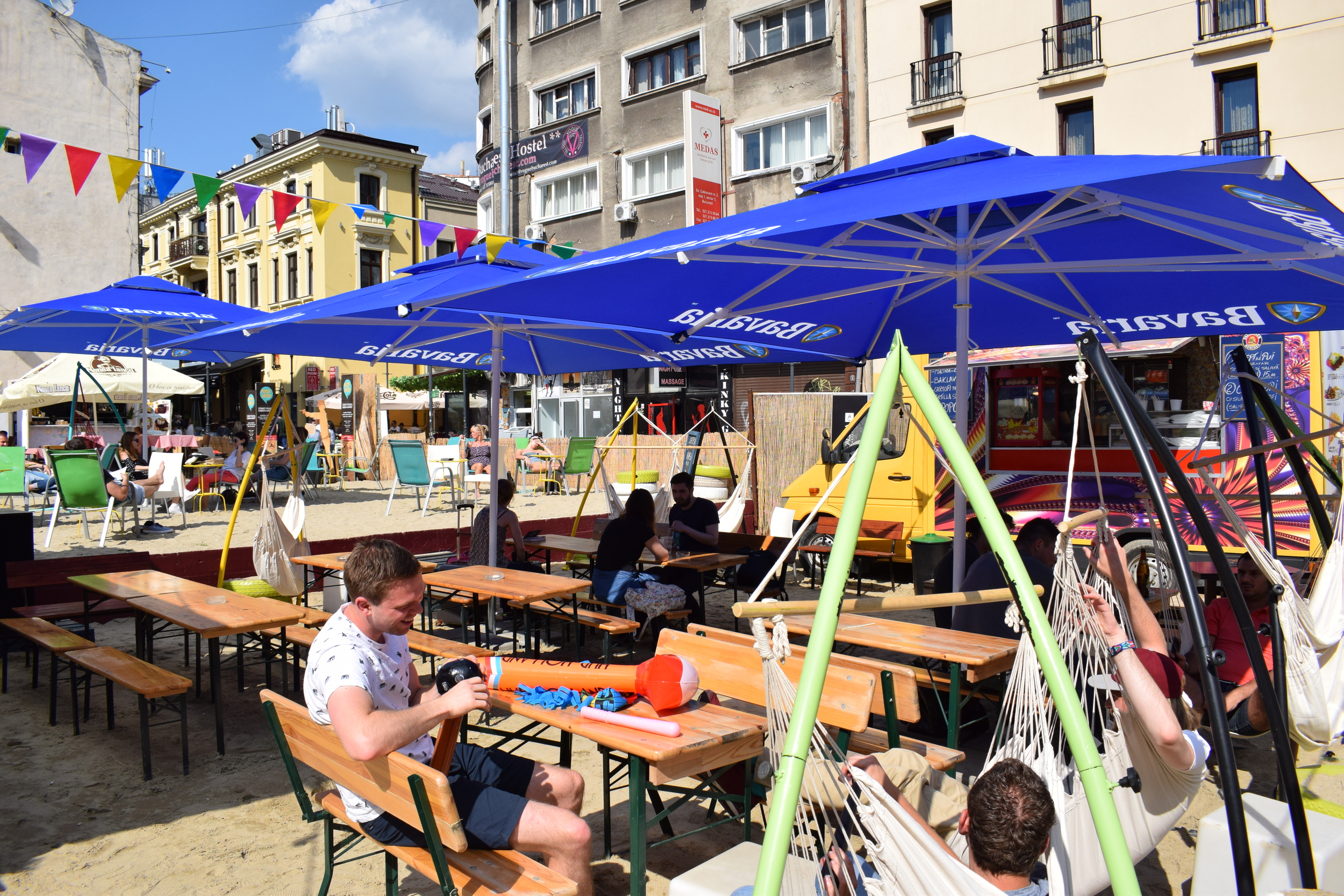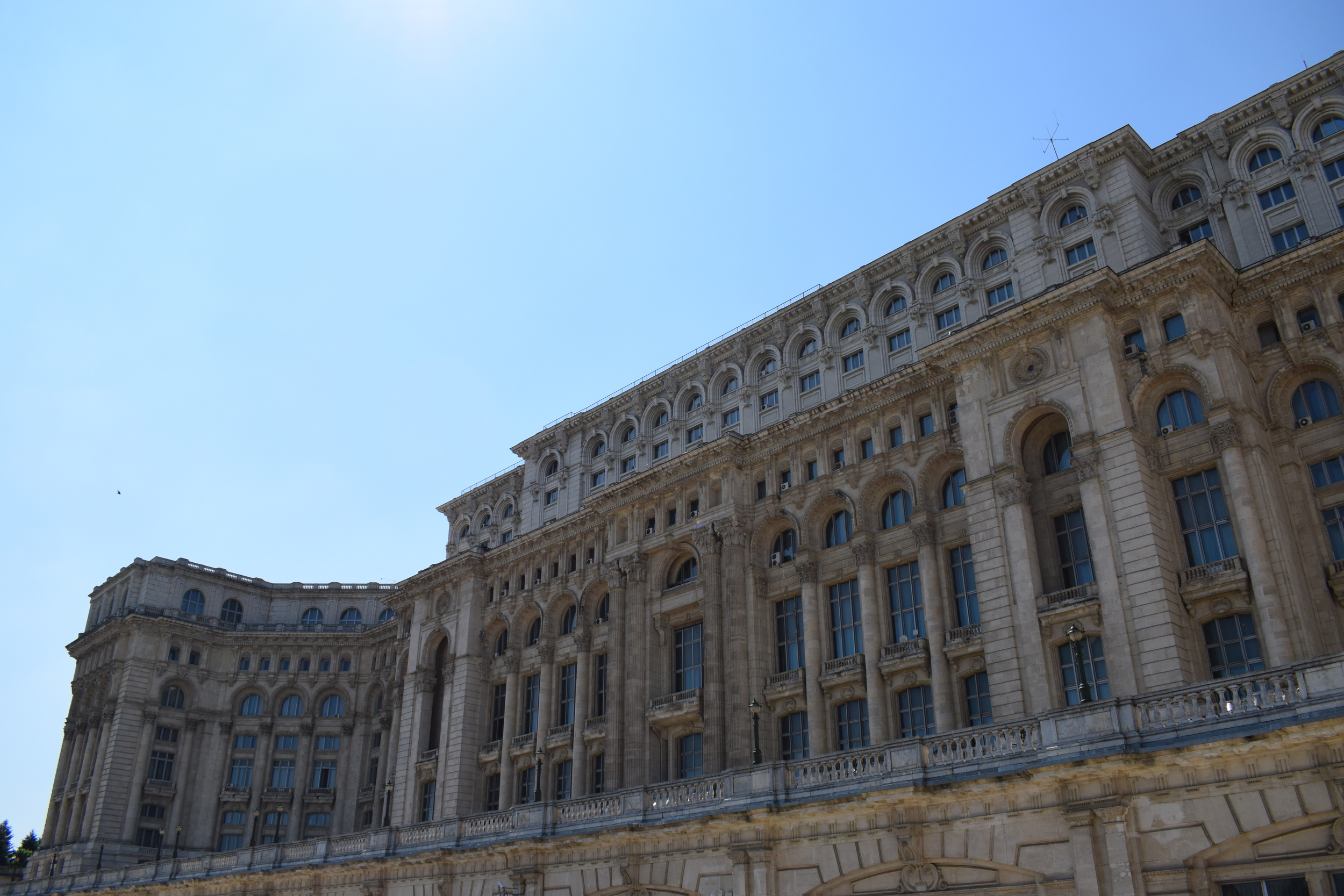Is Bucharest underrated, or just a big city with little to do?
/Palace of the Parliament in Bucharest, Romania - the world's third-largest building by area.
There we were, sipping exotic fruit juice and alcohol with the sun beating down on our heads and the sand not even a stone’s throw away from our posteriors.
Across the way were a group of people occupying a hammock, and four hammock chairs – all of which contributing to the sustenance of a chilled, party-like atmosphere.
Stalls and food vans were scattered around and music cracked the airways that evening. It would have been all too cliché if the clear blue sky had matched an ocean below to create a timeless sunset vista.
But that enviable dream would never come to fruition, ultimately because the closest stretch of coastline was no fewer than 200 kilometres away from the heart of Bucharest.
Life's a beach in the centre of Bucharest.
Yet still the opportunity arose to enjoy seaside-esque pleasures, which was an encouraging sight, as the previous night the Romanian capital looked quite underwhelming.
Bucharest is somewhere that has had a torrid history in more recent times, suffering under communist rule as part of the Eastern Bloc. In areas it looks drab and dull, with many concrete towers characterised by now-yellowing air conditioning units affixed to window frames in hope of offering some relief from the stuffy heat of inner-city life.
Many of the city’s buildings and districts were damaged or destroyed by war, earthquakes and a program of systemisation put in place by the communist President Nicolae Ceausescu, who wanted to demolish existing villages, towns and cities with the intention of turning Romania into a “multilaterally developed socialist society.”
Yet despite falling on hard times, the city’s resilience shines through in attractive neo-classical and interbellum architecture, headlined by the world’s third-largest building by area – Palace of the Parliament.
The surprisingly grand administrative building is the seat of the Parliament of Romania, and is open to the public for daily tours. Inside is an ornate interior, with chandelier-laden ceilings and marble floors lathered in thick, expensive carpet; its grandeur doing well to try and match the vastness of the city itself.
The sheer size of Bucharest's Palace of the Parliament is breathtaking.
Although visitors only get to see a small percentage of the building’s rooms due to the sheer size of it, there is a chance to head out onto the same balcony from where Michael Jackson once quipped: “It’s great to be here in Budapest!” to the Romanian crowd below. That incident has lived on as tongue-in-cheek infamy, even inspiring a ‘Bucharest not Budapest’ marketing campaign.
Perhaps even better than the city’s buildings is something relatively untouched, and that’s Herastrau Park a few minutes north of the centre but accessible by public transport or taxi. The park encompasses Lake Herastrau, which offers plenty of space for recreational boating, and a large loop around the park that took us over two hours to complete.
A dog going for a dip in Lake Herastrau.
There is plenty to see and do along the way, with a mini-park of famous European Union figureheads, a funfair, concert venue and plenty of eateries all enticing visitors along the way. Entrance is entirely free, and for a whole day’s worth of fun, it is certainly worth it.
Herastrau Park is a nice place to take a break from city life.
But while one would expect a city of Bucharest’s magnitude to have its share of attractions, I was also expecting nightlife to match. A friend of mine who had visited the city some months earlier to watch Inverness Caledonian Thistle play there in a Europa League game messaged me to inform me of the great nightlife. Especially the ‘main strip,’ where bars lined up in their throngs to encourage thirsty patrons.
But on the first night, we thought it was pretty poor. The bars were few and far between and, with the exception of an awesome gamer’s bar which was open 24 hours a day, there wasn’t much else going on.
Until we stumbled across party central.
Two of the main streets for nightlife in Bucharest.
Little did we know we’d been looking in the wrong area, and we were fortunate enough to get lost on the Saturday, finding our way to the trifecta of streets, each one joining at the end to forge a haven of clubs, pubs, bars and restaurants.
We also struck lucky by being there when the Champions League final was on, and so the atmosphere was even more intense than before. After all, we were in a city that was no stranger to the European Cup, with local team Steaua having hoisted the famed trophy back in 1986 – exactly 30 years ago.
We sampled beer, booze, football and wild partying, yet it didn’t stop when we headed back home at three in the morning. We headed back to our hotel, which was about a half-hour walk, in a taxi. SpeedyTaxi seemed to be reasonably priced, but all too many of them were looking to make a quick buck – including our driver.
We couldn’t find a SpeedyTaxi and so got in another cab, only for the metre to run astronomically fast for the duration of our journey. Upon arrival, the driver then tried to sneakily switch my 50 lei note for a 10 and made out like I had given him 40 lei less than I had done. Many taxi drivers are dodgy in Bucharest, so make sure you don’t get ripped off.
We returned the next day to party central, but it was in a more relaxed state of mind. Heading on to this area that had been converted into a beach setting, we sipped grapefruit juice from our glasses and soaked up the sun.
I looked around and was surprised that Bucharest hadn’t been mentioned to me before. It certainly wasn’t as enticing as Copenhagen, nor had as much stuff to do as Rome, yet it was up there with the biggest of them when it came to sheer size. There were some cool attractions, and an unheralded nightlife scene, fit for stag and hen parties, as well as those just looking for a good time.
I was confident in my assessment that Bucharest is underrated, mostly because it isn’t really rated at all. So as I sat back and the acidic grapefruit took control of my taste buds, I was thinking of ways to break the news about Budap- I mean, Bucharest.






















Eastern Europe is a hotbed of safe, lively and fascinating city break destinations which are, largely, unspoilt by tourists. Here are five of the best.